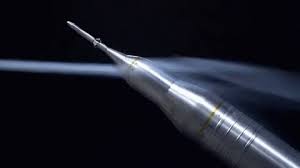
A model rocket is classified as low speed flight vehicle, and its trajectory is limited to within the atmosphere, and hence aerodynamics of a model rocket should be known to every rocket modeller. The flight of a model rocket comprises of 4 stages, as discussed in the earlier blogs.
Forces on a rocket
[Source: shutterstock.com]
The aerodynamics of a rocket include the effects of the aerodynamics loads on the airframe of the rocket, like fins or nose cone. The fins tend to flutter due to increased aerodynamic loads, causing the rocket to lose direction and stability, and the nose cone tends to crack, damaging the payload sometimes. Thus, design of the airframe and aerodynamics of a rocket go hand-in-hand.
Airflow and temperature around a rocket
[Source: iopscience.iop.org]
The mathematical aspect of rocket aerodynamics includes a set of barrowmann equations, and lift and drag equations. Barrowmann equations are used for stability of rocket, while lift and drag equations provide the aerodynamic parameters of the rocket.
Supersonic rocket flight
[Source: reddit.com]
Low speed flight vehicles do not experience much aerodynamics loads, thus can be made using lightweight materials like balsa and cardboard tubes. As the speed of the vehicle starts increasing, the materials used in building it must be increased in strength.